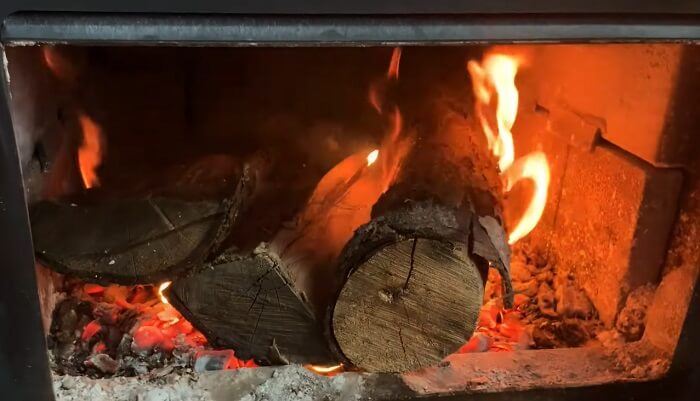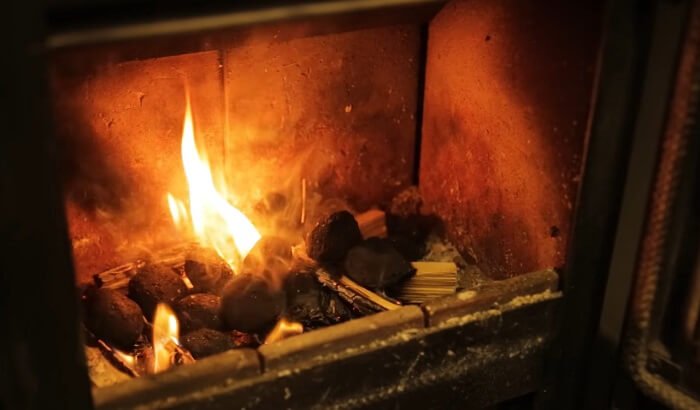Can You Vent A Wood Fireplace Horizontally?
Note: This article may contain affiliate links, which means if you make a purchase following our links won’t cost you extra, but we may earn a commission. Learn more
Venting a wood fireplace horizontally is not recommended due to safety concerns and potential performance issues. Wood fireplaces and wood-burning stoves require vertical venting to ensure proper drafting and efficient operation.
Horizontal venting can cause problems with smoke and combustion byproducts not being able to properly exit the system. This can result in poor airflow, smoke back-drafting, and a buildup of creosote, which can lead to chimney fires and reduced efficiency of the fireplace or stove.
Follow manufacturer instructions and local building codes when installing a wood fireplace or stove. These guidelines typically require vertical venting with a chimney or flue system that provides adequate height and clearance.
If you are considering venting a fireplace or stove sideways or horizontally, it is strongly advised to consult with a professional chimney sweep or a qualified HVAC technician. They can assess your specific situation and advise on the appropriate venting options that comply with safety standards and regulations.
It is best to adhere to proper vertical venting practices when installing or modifying a wood fireplace or stove. This ensures the safe and efficient operation of the appliance, as well as the prevention of potential hazards associated with incorrect venting.

Can You Vent A Wood Fireplace Horizontally or Sideways?
Venting a wood fireplace horizontally is not recommended for several reasons.
1. Horizontal venting increases the risk of creosote buildup and chimney fires. Creosote, a tar-like residue left from burning wood, accumulates faster in horizontal vents due to slower exhaust flow. This can lead to chimney fires that damage the vent and surrounding structure.
2. Horizontal vents are harder to clean. While vertical vents allow for easy access from the top for cleaning, horizontal vents require dismantling parts of the vent system to access and clean the interior.
3. Draft is reduced. The natural upward draft created by the difference in temperature between the hot flue gases and the cooler air outside is lessened in a horizontal vent, reducing the efficiency of the fireplace. A weaker draft means more smoke and creosote production.
4. Installation challenges are greater. Installing a horizontal vent system requires more fittings, elbows, and transitions which add complexity and points of potential failure over time.
Wood-Burning Fireplace Venting Options
There are a few different ways that you can vent your wood-burning fireplace. The most common method is to use a chimney, but there are also other options available, such as using an electric fan or a gas line. The best way to vent your wood-burning fireplace is to use a chimney.
Chimneys are designed to draw air up and out of the fireplace they’re tall and typically have a cap on top. This design helps create a draft, which allows the fire to burn more efficiently. If you don’t have a chimney, or if it’s not possible to use one, you can try using an electric fan or a gas line.
Electric fans can be used to help circulate air in the room and create drafts. They can be placed near the fireplace or in another room altogether. Gas lines can also be used to create drafts; however, they require some special installation and should only be done by a professional.
Relevant Post: Why Can’t I Start A Fire In My Fireplace (Wood Burning)?
How to Vent a Wood Stove Without a Chimney?
If you have a wood stove, you know that one of the most important things to do is vent it properly. Without proper ventilation, your wood stove will not work efficiently and could potentially be dangerous. The good news is that there are ways to vent a wood stove without a chimney.
One option is to use a direct vent system. This type of system vents the exhaust from your wood stove directly outside, without the need for a chimney. Direct vent systems can be installed by a professional, or you can purchase them at most home improvement stores.
Another option is to use an indirect vent system. This type of system uses your home’s existing ductwork to vent the exhaust from your wood stove outside. Indirect vent systems are less expensive than direct vent systems, but they require more installation work.
No matter which type of system you choose, make sure that you follow the manufacturer’s instructions carefully. Proper installation is essential for the safe and efficient operation of your wood stove.

Pellet Stove Venting Requirements
If you’re considering a pellet stove for your home, it’s important to make sure that you understand the venting requirements. Pellet stoves require a special type of venting system that is different from other types of stoves. In most cases, the pellet stove will need to be vented through an existing chimney.
However, there are some models that can be vented through an outside wall.The biggest concern with pellet stove venting is making sure that the system is properly sealed. The pellets that are used as fuel for these stoves are very small and can easily escape through gaps in the ventilation system.
This can create a fire hazard, so it’s important to make sure that the system is installed correctly and that all gaps are sealed.Another concern with pellet stove venting is making sure that the flue pipe is the correct size. If the flue pipe is too small, it could become clogged with ashes and cause a fire hazard.
If the flue pipe is too large, it could allow too much heat to escape and reduce the efficiency of the stove.Overall, pellet stoves are a great option for those who want an alternative to traditional wood-burning stoves. But it’s important to make sure that you understand the venting requirements before you purchase one of these stoves.
Venting Wood Stove Through Wall
If you have a wood stove, chances are you will need to vent it through the wall. There are a few things to consider when doing this, such as the type of pipe you will need and how to properly seal the opening. Pipe: The most common type of pipe used for wood stoves is a double-wall chimney pipe.
This type of pipe has an inner and outer wall separated by insulation. It is important to use the proper size pipe for your stove. If the pipe is too small, it could overheat and cause a fire.
If the pipe is too large, it could allow dangerous gases to escape into your home. Sealing: It is important to seal any gaps around the pipe where it goes through the wall. You can use caulk or expandable foam specifically designed for sealing around chimneys and flues.
Make sure there are no gaps larger than 1/8 inch so that smoke and gases cannot leak into your home.
To see our latest posts Click Here